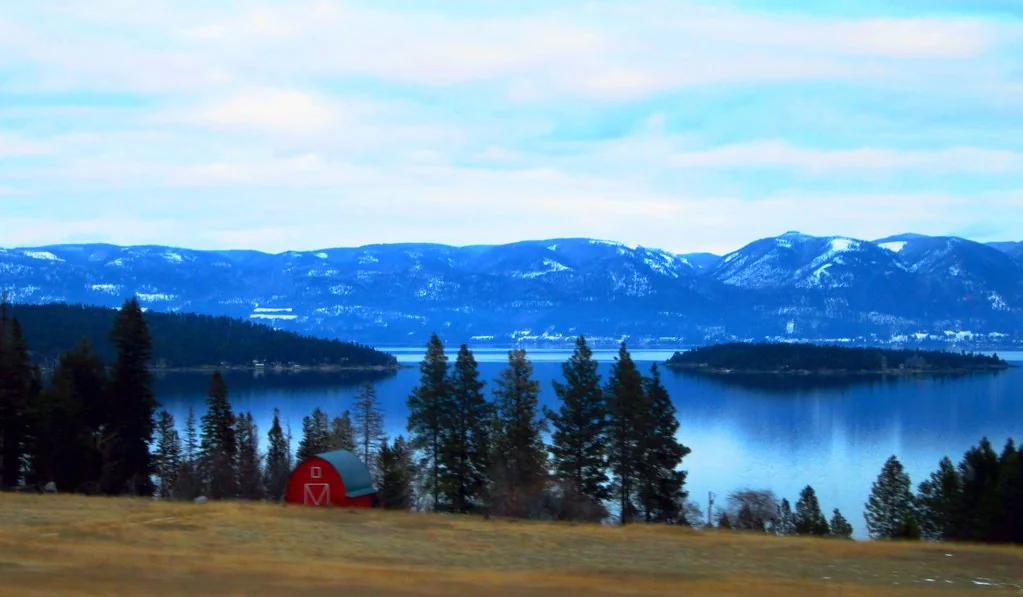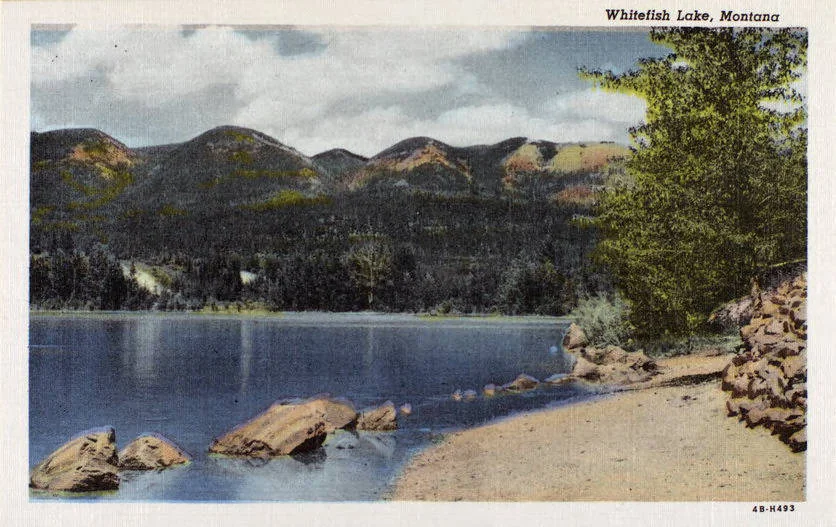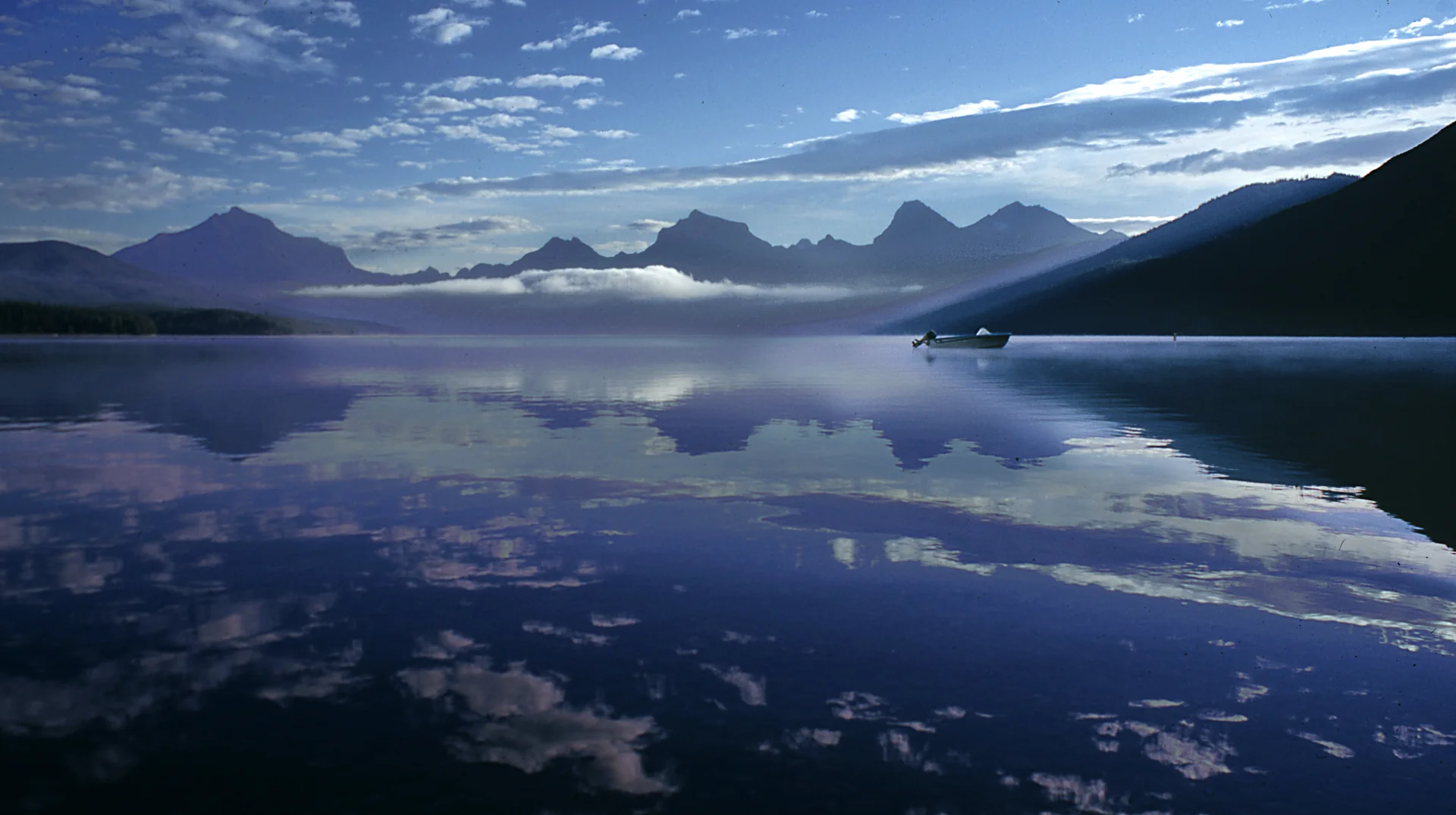Montana's Three Deepest Lakes: From Flathead's Depths to Hidden Alpine Gems
Montana's pristine waters tell the story of ancient geological forces that carved some of the most spectacular deep lakes in North America. These aquatic treasu

Montana's pristine waters tell the story of ancient geological forces that carved some of the most spectacular deep lakes in North America. These aquatic treasures, formed by glacial activity and tectonic shifts over millions of years, create diverse ecosystems that range from massive natural lakes supporting entire valleys to pristine alpine waters nestled within mountain ranges.
The state's three deepest lakes showcase this remarkable diversity perfectly. Each represents a different chapter in Montana's geological history and offers unique experiences for visitors and residents alike. From the sprawling depths of Flathead Lake, which rivals the Great Lakes in its ecological complexity, to the crystal-clear waters of Whitefish Lake supporting world-class recreation, and finally to the pristine alpine environment of Lake McDonald within Glacier National Park's protected wilderness.
Understanding these lakes means appreciating their role as both natural wonders and community lifelines. They provide drinking water, support tourism economies, offer recreational opportunities, and serve as critical habitat for fish, wildlife, and waterfowl. Their depths harbor cold-water fish species, while their surfaces reflect Montana's dramatic mountain landscapes, creating some of the state's most photographed and beloved destinations.
Flathead Lake - Montana's Deepest Natural Wonder
Stretching across 191 square miles in the Flathead Valley, Flathead Lake claims the distinction of being the largest natural freshwater lake west of the Mississippi River and Montana's deepest at 371 feet. This remarkable body of water was carved by the Flathead Lobe of the Cordilleran Ice Sheet during the last ice age, creating a natural basin that now holds over 23 million acre-feet of pristine water.
The lake's impressive depth creates a unique thermal environment that supports both warm-water and cold-water fish species. Lake trout, some weighing over 40 pounds, inhabit the deepest waters, while yellow perch, northern pike, and whitefish thrive in various depth zones. The thermal layers remain remarkably stable due to the lake's volume, with surface temperatures reaching the mid-70s in summer while depths below 200 feet maintain year-round temperatures in the 40s.
Flathead Lake's crystal-clear waters offer visibility up to 25 feet deep, making it a paradise for boaters, swimmers, and divers. The stunning vista encompasses the Mission Mountains to the east and the Salish Mountains to the west, while Wild Horse Island State Park sits like a jewel in the southern portion. This 2,164-acre island provides habitat for bighorn sheep, wild horses, and over 100 bird species.
The lake supports a thriving recreation economy with numerous marinas, boat launches, and waterfront communities. Polson anchors the southern end with its comprehensive marina facilities and the Miracle of America Museum, while smaller communities like Bigfork offer boutique shopping and fine dining with lake views. Summer brings sailors, water skiers, and paddlers, while winter ice fishing attracts anglers seeking lake trout and whitefish.
Water quality remains exceptional due to careful watershed management and the lake's natural flushing action. The Flathead River system feeds the lake from the north and exits at the southern end, creating a complete water exchange approximately every two years. This circulation helps maintain the lake's renowned clarity and supports its diverse aquatic ecosystem.
Flathead Lake's cultural significance extends beyond recreation. The Confederated Salish and Kootenai Tribes consider it sacred water, managing the southern portion as part of the Flathead Indian Reservation. Their stewardship includes habitat restoration, fisheries management, and cultural preservation efforts that benefit both tribal members and visitors.
Whitefish Lake - The Crown Jewel of the Flathead Valley
Nestled in the Whitefish Valley at the base of Whitefish Mountain Resort, Whitefish Lake reaches depths of 233 feet, making it Montana's second-deepest natural lake. This 3,315-acre glacial lake formed in a basin carved by the same ice age forces that shaped Flathead Lake, but its smaller size and mountain setting create an entirely different character and ecosystem.
The lake's remarkable water quality stems from its pristine watershed within the Northern Rocky Mountains. Fed primarily by groundwater springs and mountain streams, Whitefish Lake maintains exceptional clarity with visibility often exceeding 30 feet. The cold, nutrient-rich waters support a thriving fishery including lake trout, mountain whitefish, northern pike, and largemouth bass, with the deep waters providing crucial cold-water habitat during summer months.
Whitefish Lake's proximity to Whitefish Mountain Resort creates unique recreational opportunities throughout the year. Summer visitors enjoy world-class sailing conditions with consistent thermal winds, while the surrounding Whitefish Range provides dramatic backdrops for photography and sightseeing. The lake's protected bays offer ideal conditions for paddleboarding, kayaking, and swimming, with water temperatures reaching comfortable levels by July.
The community of Whitefish wraps around the lake's northwestern shore, creating a resort town atmosphere that balances development with environmental protection. Whitefish City Beach provides public access with swimming areas, picnic facilities, and boat launches, while the lakefront trail system connects parks and residential areas. Local businesses cater to both outdoor enthusiasts and luxury travelers, with lakefront restaurants offering fresh fish and craft beverages with panoramic water views.
Winter transforms Whitefish Lake into a different recreational destination entirely. Ice fishing becomes popular once safe ice forms, typically by January, with anglers targeting northern pike and mountain whitefish through the ice. The surrounding ski terrain at Whitefish Mountain Resort creates opportunities for combined winter sports vacations, while the town's winter festival season brings ice sculptures, dog sled races, and winter markets.
Environmental stewardship plays a crucial role in maintaining Whitefish Lake's pristine condition. The Whitefish Lake Institute conducts ongoing research and monitoring programs, tracking water quality, invasive species, and climate change impacts. Local regulations limit shoreline development and protect critical habitat areas, while community education programs promote responsible recreation and conservation practices.
The lake's relatively small size compared to Flathead Lake creates more intimate experiences for visitors. Paddlers can easily circumnavigate the entire shoreline in a day, discovering secluded bays, wildlife viewing areas, and scenic picnic spots. The surrounding mountains provide hiking opportunities with lake overlooks, while the clear waters offer excellent conditions for underwater photography and snorkeling.
Lake McDonald - Glacier National Park's Deep Alpine Treasure
Lake McDonald, reaching depths of 141 feet, ranks as Montana's third-deepest lake and serves as the crown jewel of Glacier National Park's western entrance. This 10-mile-long glacial lake stretches through the McDonald Creek valley, surrounded by some of the most spectacular mountain scenery in North America, including the Continental Divide and peaks exceeding 10,000 feet elevation.
The lake's formation tells the story of massive glacial activity during multiple ice ages. The McDonald Creek glacier carved this deep trough, which later filled with meltwater to create today's pristine alpine lake. The surrounding peaks continue to feed the lake through snowmelt and glacial runoff, maintaining its remarkably cold temperatures that rarely exceed 60 degrees even in midsummer.
Lake McDonald's alpine setting creates a unique ecosystem adapted to short growing seasons and extreme weather conditions. Native westslope cutthroat trout, bull trout, mountain whitefish, and pygmy whitefish inhabit these cold, clear waters, though fishing regulations strictly protect native species. The lake's depths provide crucial thermal refuge for cold-water fish during the brief mountain summer, while the shallow areas support aquatic vegetation and invertebrates.
The remarkable landscape surrounding Lake McDonald offers countless photography and sightseeing opportunities. Going-to-the-Sun Road follows the lake's southern shore for several miles, providing easy access to scenic overlooks, trailheads, and the historic Lake McDonald Lodge. This 1913-era lodge offers rustic accommodations, dining, and boat tours that showcase the lake's dramatic mountain reflections and wildlife viewing opportunities.
Recreational activities on Lake McDonald require special consideration due to its national park setting and alpine environment. Kayaking and canoeing provide excellent ways to explore the lake's pristine waters, though visitors should prepare for cold water temperatures and rapidly changing mountain weather. Swimming remains challenging due to cold temperatures, but the crystal-clear waters offer incredible visibility for those brave enough to take a quick dip.
The lake's position within Glacier National Park means it benefits from the highest level of environmental protection. No motorized watercraft are permitted, preserving the natural quiet and water quality. This protection extends to the entire watershed, ensuring that Lake McDonald remains one of the most pristine large lakes in the lower 48 states.
Winter access to Lake McDonald becomes limited as Going-to-the-Sun Road closes to vehicle traffic, typically from October through June depending on snow conditions. However, winter visitors can access the lake via cross-country skiing or snowshoeing, discovering a frozen landscape of incredible beauty. The surrounding peaks, draped in snow and ice, create some of the most spectacular winter scenery imaginable.
Conclusion
These three remarkable lakes represent the diverse beauty and ecological richness that make Montana's waters legendary among outdoor enthusiasts and nature lovers. Each offers distinct experiences while contributing to the state's reputation as a premier destination for water-based recreation and natural beauty appreciation.
Flathead Lake's massive scale and recreational infrastructure make it ideal for extended vacations and water sports, while its cultural significance and ecological diversity provide educational opportunities for visitors of all ages. Whitefish Lake combines resort town amenities with pristine alpine water quality, creating perfect conditions for both active recreation and relaxation. Lake McDonald offers the ultimate wilderness lake experience, where visitors can paddle the same pristine waters surrounded by peaks that have remained unchanged for millennia.
Together, these lakes showcase the geological forces that shaped Montana's landscape, from ice age glaciers to ongoing mountain building processes. They support diverse ecosystems, provide crucial habitat for native fish and wildlife, and offer recreational opportunities that attract visitors from around the world while serving as gathering places for local communities.
Planning visits to experience all three lakes creates opportunities to understand Montana's aquatic diversity while enjoying distinctly different recreational experiences. Whether seeking the expansive waters and warm summer temperatures of Flathead Lake, the resort town atmosphere and pristine conditions of Whitefish Lake, or the wilderness adventure and spectacular scenery of Lake McDonald, each destination rewards visitors with memories that last lifetimes while deepening appreciation for Montana's remarkable natural heritage.





